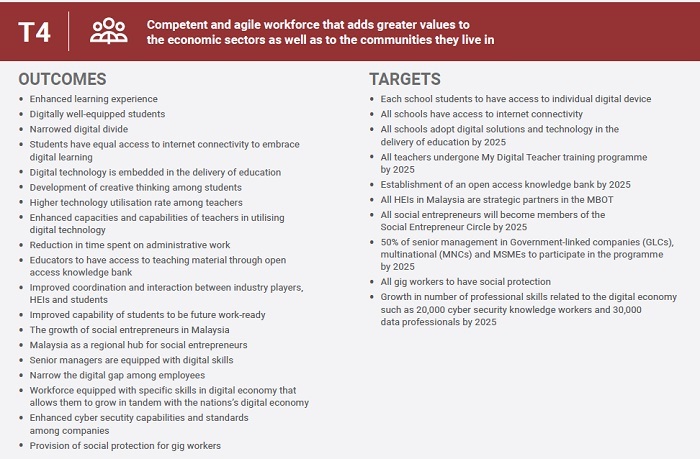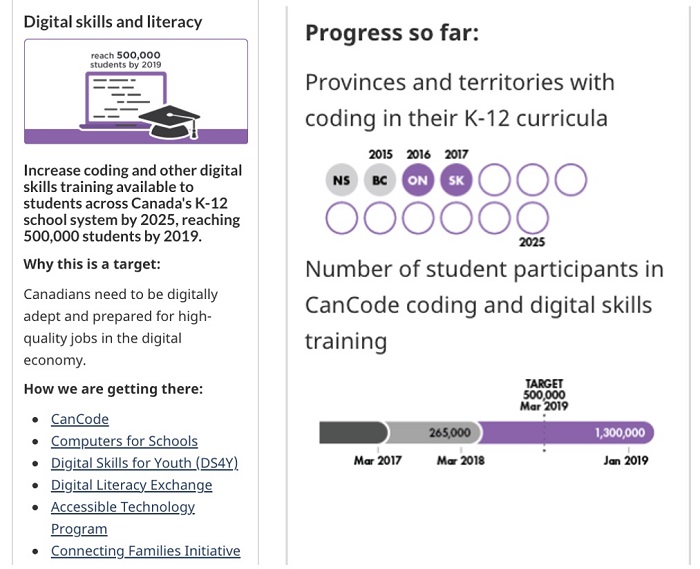25 years after the MSC vision, MyDigital evokes sense of déjà vu
By Manu Menon March 17, 2021
- Building agile digital talent takes tracking, responsibility and continuity
- Main reservations over tracking & implementation of all outcomes, objectives

 Although I eagerly watched the launch of the Malaysia Digital Economy Blueprint on Feb 19, I couldn’t help feeling a sense of déjà vu. Back in 1996, the Malaysian government launched the Multimedia Super Corridor (MSC). One of the main focus of the MSC was also to develop a digital talent pool.
Although I eagerly watched the launch of the Malaysia Digital Economy Blueprint on Feb 19, I couldn’t help feeling a sense of déjà vu. Back in 1996, the Malaysian government launched the Multimedia Super Corridor (MSC). One of the main focus of the MSC was also to develop a digital talent pool.
Incredibly, 25 years later – that a quarter of a century – we are still lamenting about the shortage of skilled talent and the talent brain drain that plagues our nation. Having read through the objectives in Thrust 4 of MyDigital, i.e. the goal to build agile and competent digital talent, I am hopeful that we will get this right, this time. At the same time, I have some reservations as well as some thoughts on how we could possibly pull off this ambitious initiative.
One of my main reservations is the tracking and implementation of all these outcomes and objectives. There are 13 different objectives that fall under Thrust 4 alone. Yes, these objectives are phased from 2021-2030 but I still feel there are too many initiatives that need to be executed concurrently. What is even more important is that there needs to be a clear method of tracking the progress of the various outcomes on a yearly basis. I assume the government has thought about this, but it wasn’t spelt out in the document and that makes me nervous.
As the Scottish poet, Robert Burns said, “The best-laid plans of mice and men often go awry.” This is why it’s imperative to keep a close eye on the progress of all these different initiatives.
For example, in Canada, they had launched an equally ambitious plan back in 2017 called the Innovation and Skills Plan. However, the Canadian government prioritised specific lifelong skills development initiatives that prepared their population to face an unknown future. Even more impressive is that they had an online portal where the public could visit to see the progress of each initiative from one year to the next.

The other concern I have is that there is no one ministry or body that will be accountable for the success of Thrust 4. Yes, I agree it’s a huge undertaking and cannot be handled by one ministry or agency, however, this also means that there is nowhere for the “buck to stop”. The last thing we need is for the blame-game to start when no progress is made on any of the initiatives. For example, in Israel in order to realise their digital ambitions, they formed the Digital Israel Bureau whose main function was to coordinate with other ministries and government departments to realise the visions of a digital future.
Saudi Arabia had launched the ICT Sector Strategy 2023 a couple of years ago. They also had the Ministry of ICT spearhead the initiative. The Kingdom, which was voted No.1 Digital Riser amongst the G20 nations according to a report by the European Centre for Digital Competitiveness from 2020, had a clear agenda in moving its nation forward. The Ministry of ICT played the role of catalyst and coordinator in achieving the goals set out in the strategy document.
Another important factor in ensuring the success of the Malaysia Digital Economy Blueprint is continuity. In order for this plan to succeed, there needs to be a commitment from all political parties that no matter which coalition is in power, the digital push doesn’t waiver. Estonia, the tiny nation in Europe, is a good example of this. Since their independence in 1991, they have had no less than 5 coalitions governing the country, with about 10 prime ministers during the same time period. However, every ruling party/coalition that took power didn’t dismantle the work of the previous government when it came to the goal of making Estonia a model e-nation.
In summary, the blueprint is a great plan to move our country forward. However, it’s crucial that we keep track of the progress of each initiative from one year to the next. Plus, we need to have a single body or ministry that take full responsibility to realise the vision set forth. Lastly, we need continuity to ensure the seeds that are put in place are given enough time to take root and grow into a strong, long-lasting and flourishing tree from which each Malaysian can benefit from.
Manu Menon is the founder of Edtech startup, Youthopia.


